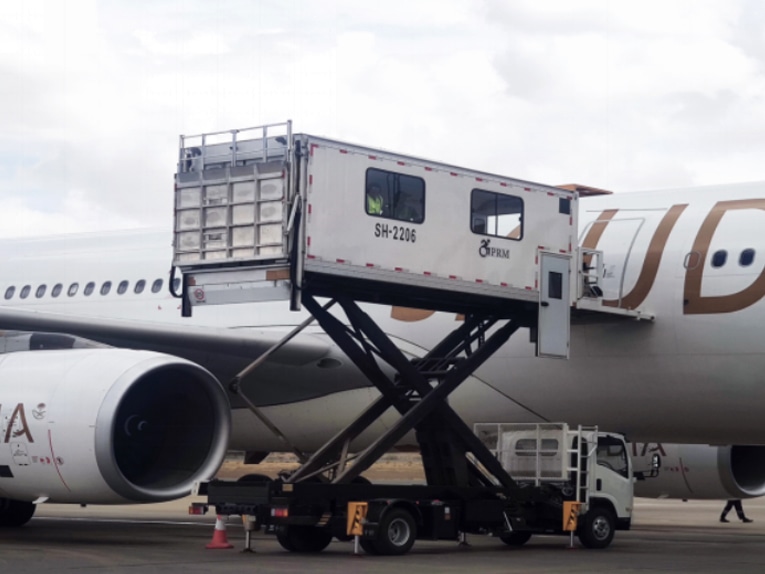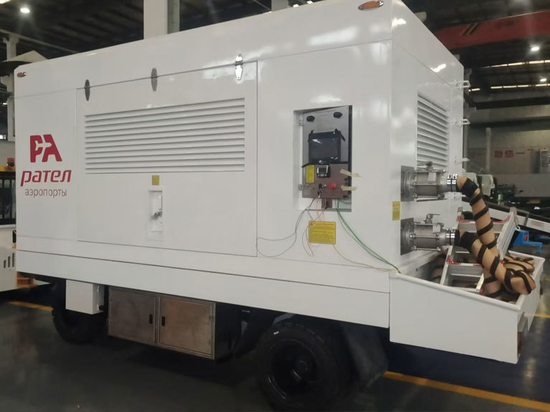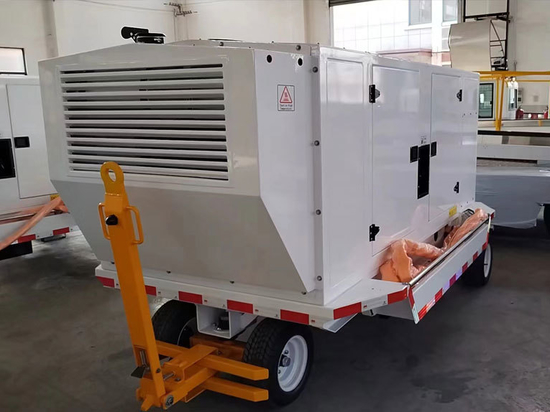
#Industry News
Aircraft PRM Medical Lift Safety Device
Aircraft PRM Medical Lift Safety Device
1. It is not possible to drive the vehicle without the power take-off (P.T.O.) being removed, the compartment being lowered to the lowest position and the support being stowed, otherwise the engine of the vehicle in gear will stall.
2.When carrying out the operation, the support must be put into position first, if the support is not put, the compartment cannot be raised.
3、When encountering an emergency, you can directly press the emergency stop switch on the operation panel (main operation and upper operation are available) to stop the machine.
4. The front end of the front platform is equipped with a buffer rubber tube and an anti-collision switch to ensure safe docking with the cabin door of the airliner.
5. When the anti-collision switch at the front of the platform touches the aircraft, the platform will automatically stop rising and reaching forward;
6, the vehicle is set with two sets of emergency manoeuvring devices, one set is hydraulic hand pump, which is manually hand cranked. The other set is an electrical control device, equipped with an emergency electric pump to prevent backup in case of accidents such as failure of the main power.
7. The lifting of the box and the lifting of the legs are controlled by linkage switches to prevent accidents caused by misoperation of the staff.
8, designed with emergency handling measures, can be in the case of engine shutdown, lower the box, stowed support, in order to make the vehicle out of the aircraft.
9. The lifting mechanism is locked by hydraulic lock, which is safe and reliable;
10, the compartment lifting and supporting legs put away when the warning lamp sound and light alarm;
11, when the hydraulic cylinder support leg is not completely retracted, in each operation control parts are warning light prompts, and the vehicle can not be driven
12、When the compartment rises to the compartment ground and the front platform plane flush, the front platform will be synchronised with the compartment lift
13、In the parts that are easy to cause harm to the personnel are marked with eye-catching warning signs, and all the hydraulic actuators have sound and light warnings when they act.
14. Equipped with sound and light alarm for reversing, and reversing image and monitoring image in the cab.
15. When the rear platform is not in use, the platform can be folded up and fixed at the rear end of the compartment, and locked by hydraulic locks, and its lifting cylinders are also equipped with hydraulic locks, and the rear platform and the supporting legs are equipped with limit switches, and the lifting mechanism is equipped with a limit top bar.
16. When the extractor cuts into the work, the instrument and each operation panel in the cab are indicated.
17、The gangway is rotary type with stainless steel pull-out handrail, which can effectively back off the aircraft hatch.
Aircraft PRM Medical Lift Working Conditions
Altitude: 3700m;
Ambient temperature: -20 ℃ ~ +50 ℃.
Maximum wind speed: 20.8m/s;
Aircraft PRM Medical Lift Technical Specifications
Overall dimensions (L×W×H): 9540 mm×2460 mm×3770 mm
Compartment internal size (L×W×H): 6350 mm×2200 mm×2100 mm
Telescopic platform telescopic distance: 600 mm
Travelling distance of moving platform: 600 mm
Height of front platform from the floor: 2500 mm-5800 mm.
Lifting height of compartment from the floor: 1420-5800mm.
Rear platform height above ground: 50 mm-1420mm
Wheelbase: 5200 mm
Approach angle: 14°
Angle of Departure: 14
Outer diameter of channel circle: 20500mm
Overall weight: 11250kg
Maximum load capacity of compartment: 2500kg
Maximum load capacity of front platform: 1200kg
Maximum load on rear platform: 500kg
Allowable working wind speed: Class 8
Maximum speed: 75 km/h
Approaching aircraft speed≤3 km/h
Maximum working pressure: 16 Mpa




